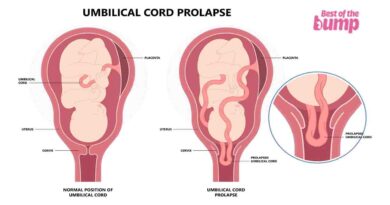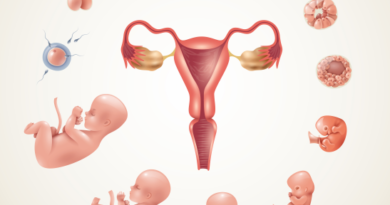How to avoid breast cancer
Breast cancer, one of the most prevalent and feared diseases among women, has a significant impact on individuals, families, and society as a whole. While there are risk factors beyond our control, there are also numerous proactive steps you can take to reduce your risk of developing breast cancer. In this comprehensive guide, we will delve into the various aspects of breast cancer prevention and provide you with practical strategies to help you lower your risk.
Understanding Breast Cancer
Before we explore prevention strategies, it’s essential to understand the basics of breast cancer. Breast cancer is a disease that occurs when cells in the breast tissue grow uncontrollably. These abnormal cells can form a lump or tumor, which may be benign (non-cancerous) or malignant (cancerous). The malignant tumors can invade nearby tissues and, if not detected and treated early, can spread to other parts of the body.
Breast cancer is a complex disease with multiple subtypes, each with its own characteristics and risk factors. Some common types of breast cancer include:
- Ductal Carcinoma In Situ (DCIS): This is the earliest stage of breast cancer, where abnormal cells are confined to the milk ducts and have not invaded surrounding tissues.
- Invasive Ductal Carcinoma (IDC): This is the most common type of breast cancer, characterized by cancer cells that have invaded the surrounding breast tissues.
- Invasive Lobular Carcinoma (ILC): This type begins in the milk-producing glands (lobules) and can spread to nearby tissues.
- Triple-Negative Breast Cancer: This subtype lacks estrogen and progesterone receptors, as well as HER2 receptors, making it more challenging to treat.
- Hormone Receptor-Positive (HR+) Breast Cancer: These cancers have receptors for estrogen and/or progesterone and may respond well to hormone therapy.
Breast Cancer Risk Factors
Several risk factors can increase an individual’s likelihood of developing breast cancer. While some of these factors are beyond our control, others can be managed or modified to reduce risk. It’s important to note that having one or more risk factors doesn’t guarantee that you will develop breast cancer, but it does increase your chances. Common breast cancer risk factors include:
- Gender: Breast cancer primarily affects women, although men can also develop it.
- Age: The risk of breast cancer increases with age, with the majority of cases occurring in women over 50.
- Family History: A family history of breast cancer, especially in close relatives like a mother, sister, or daughter, can increase your risk.
- Inherited Gene Mutations: Certain gene mutations, such as BRCA1 and BRCA2, significantly elevate the risk of breast cancer.
- Personal History: If you’ve previously had breast cancer or certain non-cancerous breast conditions, your risk may be higher.
- Hormone Replacement Therapy (HRT): Long-term use of HRT, particularly with combined estrogen and progestin, can increase breast cancer risk.
- Reproductive Factors: Early menstruation (before age 12), late menopause (after age 55), and having your first child after age 30 can contribute to an increased risk.
- Dense Breast Tissue: Women with dense breast tissue may have a higher risk as it can make it harder to detect abnormalities on mammograms.
- Radiation Exposure: Previous exposure to high doses of radiation, especially in the chest area, can raise the risk.
- Lifestyle Factors: Poor diet, lack of physical activity, excessive alcohol consumption, and smoking can all contribute to increased breast cancer risk.
Now that we’ve covered the basics of breast cancer and its risk factors, let’s explore actionable steps to reduce your risk:
Maintain a Healthy Lifestyle
One of the most effective ways to reduce your risk of breast cancer is by adopting a healthy lifestyle. Here are some key components:
a. Diet: A balanced diet rich in fruits, vegetables, whole grains, and lean proteins can support overall health and potentially reduce breast cancer risk. Limit processed foods, sugary drinks, and red meat consumption.
b. Weight Management: Obesity is a known risk factor for breast cancer, especially in postmenopausal women. Maintaining a healthy weight through regular exercise and portion control can help reduce this risk.
c. Physical Activity: Engaging in regular physical activity, such as brisk walking, jogging, swimming, or yoga, can help reduce breast cancer risk. Aim for at least 150 minutes of moderate-intensity exercise or 75 minutes of vigorous-intensity exercise per week.
d. Alcohol Consumption: Limit alcohol intake, as excessive alcohol consumption has been linked to an increased risk of breast cancer. If you choose to drink, do so in moderation (up to one drink per day for women).
e. Smoking Cessation: If you smoke, quitting is not only beneficial for your lung health but also reduces the risk of breast cancer.
Breastfeed Your Children
Breastfeeding has numerous health benefits for both mother and baby. Studies suggest that breastfeeding for a longer duration can reduce the risk of breast cancer. It’s believed that breastfeeding may help by delaying the return of menstruation and reducing exposure to estrogen, which can promote the growth of certain breast cancers.
Hormone Replacement Therapy (HRT) Considerations
If you’re considering hormone replacement therapy (HRT) to manage menopausal symptoms, it’s essential to have a thorough discussion with your healthcare provider. HRT, particularly when used for an extended period, has been associated with an increased risk of breast cancer. Your healthcare provider can help you weigh the benefits and risks and explore alternative options if necessary.
Know Your Family History
Understanding your family’s history of breast cancer is crucial. If you have close relatives (mother, sister, daughter, or multiple family members) who have had breast cancer, consider genetic counseling and testing for mutations in genes like BRCA1 and BRCA2. Knowing your genetic risk can help you make informed decisions about screening and prevention options.
Regular Breast Self-Exams and Clinical Breast Exams
Early detection is key to successfully treating breast cancer. Conduct regular breast self-exams to become familiar with your breast tissue, allowing you to notice any changes or abnormalities. Additionally, schedule regular clinical breast exams with your healthcare provider. They can detect lumps or changes that may not be apparent during self-exams.
Mammography and Other Screening Tests
Mammography is a crucial screening tool for breast cancer. The American Cancer Society recommends that women with an average risk of breast cancer start annual mammograms at age 45, and women aged 55 and older can transition to biennial screenings or continue with annual mammograms. If you have an increased risk due to factors like family history or genetic mutations, your healthcare provider may recommend earlier or more frequent mammograms.
In addition to mammography, other imaging and screening tests, such as breast MRI or ultrasound, may be used in specific situations or for high-risk individuals. Discuss your screening plan with your healthcare provider to determine the most appropriate approach for your situation.
Breast Cancer Risk Reduction Medications
For women at high risk of breast cancer, healthcare providers may consider prescribing risk reduction medications, such as tamoxifen or raloxifene. These medications can help lower the risk of certain types of breast cancer but also have potential side effects. It’s essential to have a detailed discussion with your healthcare provider about the benefits and risks of these medications before considering them as a prevention option.
Consider Risk-Reducing Surgery
In some cases, women at very high risk of breast cancer may consider risk-reducing surgeries, such as prophylactic mastectomy (removal of one or both breasts) or oophorectomy (removal of the ovaries). These procedures can significantly reduce the risk of breast cancer, but they are major decisions that should be made in consultation with a healthcare provider and genetic counselor.
Breast cancer is a complex disease with various risk factors, but many of them can be mitigated through proactive measures. By adopting a healthy lifestyle, staying informed about your family history, participating in regular screenings, and considering risk reduction options when necessary, you can significantly lower your risk of breast cancer.
Remember that early detection is crucial, so be vigilant about self-exams and clinical breast exams, and follow recommended screening guidelines. Consult with your healthcare provider to create a personalized breast cancer prevention plan that suits your individual risk profile and needs. Together, we can take steps towards reducing the burden of breast cancer and promoting better breast health for all.





